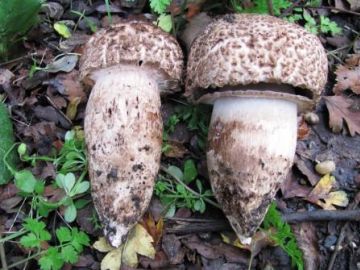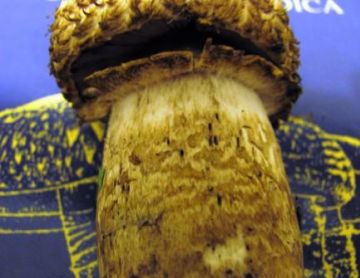Thursday October 7th 2010 : During a fungi foray at the First World War Airfield at Stow Maries (TQ8199) around 15-20 specimens of this species were found on either side of the bridleway hedge that flanks the eastern boundary of the old airfield. They were growing in clusters both beneath the hedge and in the field opposite, recently planted with new woodland by the owner of the airfield. This species keys out to Section Spissicaules in Flora Agaricina Neerlandica (2001), two principal characteristics of which are yellowing rhizomorphs at the base of the stem and brown girdles beneath the ring. Both features can be clearly seen on the photographs below although the former broke off when the mushrooms were removed from the caespitose clump they were part of, leaving only a stump. The scales on the cap become broad and flattened (lanate) with age while the flesh, like many brown capped Agaricus, turns pink when cut but pale yellowish white, later brown, in the base of the stem. Both cap and stem turn yellowish on handling, the latter often fading to brown, as is evident here. The spores were 6-7um in length; elliptical and without a germ pore. Most of the specimens were close to the point of no return and even the younger examples illustrated here were often riddled with insect holes.
There are no records on the BMS Database for this species in Essex but in his article on Agaricus in the EN No.23 (2005/2006) Tony Boniface lists a single record from Belhus Woods Country Park, made by Mary Smith. Thus this would appear to be the second County record.


















